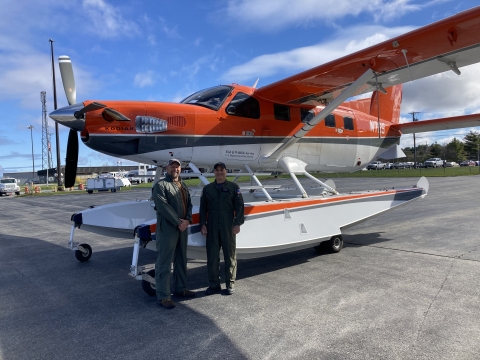About this Collection
By Mark Koneff, Branch of Migratory Bird Surveys
While its seems like I was just writing the introductory blog for last year’s Waterfowl Breeding Population and Habitat Survey (WBPHS), another survey season has come and gone. It’s with great gratitude that I can report that all the crews have returned safely after a successful survey. The WBPHS is the largest and longest running wildlife survey in the world and its results have, since 1955, been used by researchers worldwide to shed light on large-scale dynamics of migratory species. The primary purpose of the WBPHS is to provide information on spring population size and trends for most North American duck species, several populations of Canada geese, tundra swans, and American coot, and to evaluate breeding habitat conditions.
The survey is conducted by airplane, helicopter, and ground over a 2 million square mile area that covers the principal breeding areas in North America, and includes parts of Alaska, Canada, and the northcentral and northeast U.S. This survey is also referred to as the Breeding Population Survey (BPOP) or the May Survey.
Many will recall that last year, even into late April, it was looking like spring was going to be late for our western crew areas. But that all changed when a large and persistent “omega block” established itself in the mid-continent in late April and early May. Omega blocks are upper atmospheric blocking patterns that are formed when a ridge of high pressure pushes north, causing a jet stream pattern resembling the Greek letter omega. This pattern can become very stable and lock into place, hence the term block. Under the high-pressure ridge, clear, warm conditions can persist for weeks while the low-pressure throughs on either side of the ridge are characterized by cool, wet conditions. Omega blocks are not uncommon this time of year, however, the extreme heat across the prairies and western boreal forest in May under the ridge was very unusual. That extreme heat not only rapidly advanced spring across the mid-continent and west but it greatly elevated fire risk and helped spawn the worse forest fire season in recent decades across Canada. The extensive fires challenged survey operations in both the west and east in 2023.
Going into April of 2024 we had concerns that this year could be another extreme fire season in the boreal forest as this region was still very dry emerging from winter. It was also rather dry across the prairie pothole region, particularly in Canada. In the U.S. prairie pothole region of Montana, North Dakota and South Dakota, heavy snow and rainstorms in April and May substantially improved wetland conditions. So by the time we surveyed those areas, they were in good condition to support a strong waterfowl breeding effort. Much needed heavy snow and rain also fell in April and May across large regions of drought-stricken prairie Canada, greatly improving breeding habitat conditions, though in some cases the water deficits were so great that improvements in the availability and condition of seasonal basins were less noticeable. In some areas, our crews noted substantial unoccupied wetland habitat which could indicate that birds had already moved through the region prior to the return of moisture. While the return of water to some areas is good news, across the U.S. and Canadian prairies we continue to see ongoing conversion of grassland to cropland, continued loss of Conservation Reserve Program nesting cover, and wetland drainage.
This year, fires again disrupted survey operations in early to mid-May in some areas in the western boreal forest, however, some well-timed moisture and cool temperatures reduced fire impacts. Still, portions of the western boreal forest remain extremely dry. Conditions are so dry in northern British Columbia, Alberta, and Saskatchewan as well as southern Northwest Territories that we are already looking ahead to the summer and developing alternate plans for some waterfowl banding stations that we typically operate there. Conditions in the eastern boreal forest were generally improved from last year though there were still regions of Quebec, Labrador, Maine, and New Brunswick that were drier than normal during the survey.
Please click on the individual field reports to read the first-hand observations from our pilot biologists, aerial observers, and ground crews on what they saw during the 2024 Survey.


